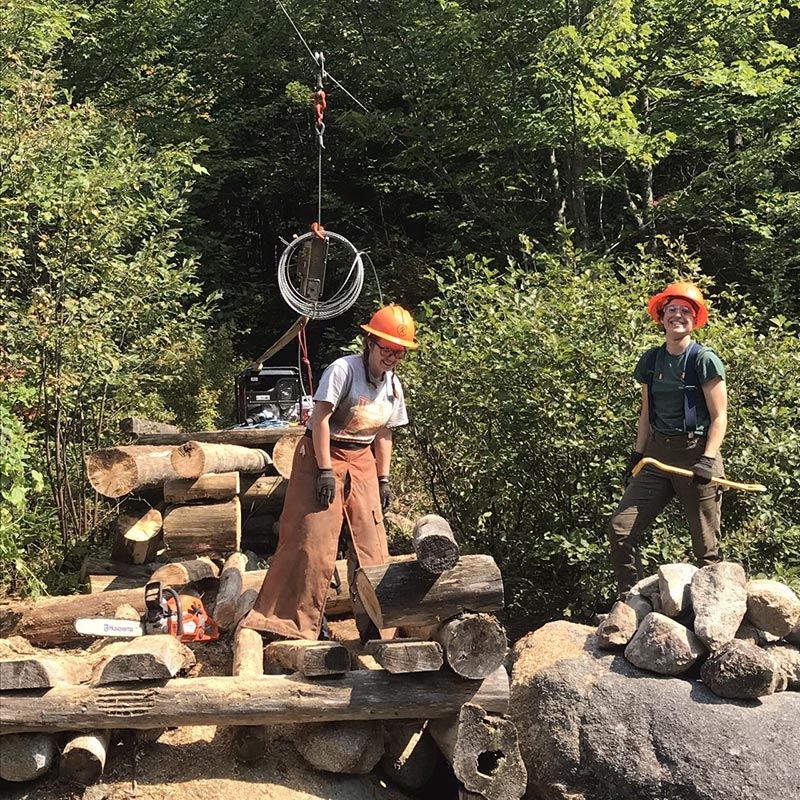Written by Joey Sirois, Outdoor Studies Human Impacts

How do you think trails are made? Many people think a well-maintained trail is just something that has always been there. I’ve heard some folks say they think God was the one that made it. People usually don’t notice a trail unless there is something wrong with it, like erosion or lots of mud. Someone once told me that “good trail work should go unnoticed”, which was not something my ego at the age of twenty enjoyed hearing. It makes sense, I don’t really notice a road unless it has potholes in it. Now after eight years of creating trails, I’ll advocate that people should have a greater awareness of the trails they’re on and who makes them and whose land it may be on.

